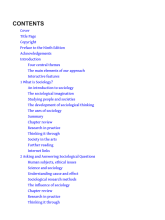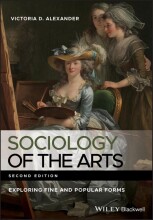Art and Commerce - Caves (2000) Economic Properties of Creative Activities
5 important questions on Art and Commerce - Caves (2000) Economic Properties of Creative Activities
In Economic Properties of Creative Activities, Caves (2000) delineates the 'Nobody Knows principle' as one of the seven basic economic properties specific to the Creative Industries, underpinning their organization and structure.
Can you explain what this principle means and point out how it highlights a difference between the Creative Industries and other areas of the economy?
- The creative economy deals with symmetrical ignorance.
- In a situation of symmetrical ignorance:
- The producer doesn't know how a product will be received.
- The buyer doesn't know how good a product is before buying it.
- Other areas of the economy deal with information asymmetry.
- A lot of risk, because both producer & seller are in the dark.
- Another dimension: internal vision/external manifestation is uncertain.
- Creators don't know if their vision will be appreciated.
- Pervasiveness of the option contract.
- Some Risks are mitigated as each new step in the creative process can re-evaluate the product up to that point.
In Economic Properties of Creative Activities, Caves (2000) delineates the 'Art for Art's Sake principle' as one of the seven basic economic properties specific to the Creative Industries, underpinning their organization and structure.
Can you explain what this principle means and point out how it highlights a difference between the Creative Industries and other areas of the economy?
- In (most) other areas of the economic production, workers are solely motivated by wages and working conditions.
- And not emotionally/intellectually invested in the product or their job.
- Workers in the creative economy are motivated by their own vision of the end product and artists care about their art.
- They'll produce without the motivation of wages.
- They'll produce even when they should restrict the supply.
- Artists' creative input tend to be rather cheap.
- Great for the entrepreneur.
- Artists might not be willing to compromise creative vision for commercial succes.
- Difficult for entrepreneur.
In Economic Properties of Creative Activities, Caves (2000) delineates the 'Motley Crew principle' as one of the seven basic economic properties specific to the Creative Industries, underpinning their organization and structure.
Can you explain what this principle means and point out how it highlights a difference between the Creative Industries and other areas of the economy?
- In other areas of economic production, products can be made with substitutable/replaceable inputs.
- Creative product have inputs that require diverse skills and cannot be substituted.
- E.g., stars in films, top screenplay writers, high quality soundtrack.
- Producers have to make smart choices about whom to hire.
- Higher grades + faster learning
- Never study anything twice
- 100% sure, 100% understanding
In Economic Properties of Creative Activities, Caves (2000) delineates the 'Infinite variety principle' as one of the seven basic economic properties specific to the Creative Industries, underpinning their organization and structure.
Can you explain what this principle means and point out how it highlights a difference between the Creative Industries and other areas of the economy?
- For most products it holds that, if the price is nearly the same, the choice between product A or product B depends on which one has a higher quality level.
- With creative products:
- The quality level of the product can only be inferred after the consumption of the product.
- There are a myriad of creative products to choose from for the consumer.
- Infinite possibilities for creative products and endless creative ideas, BUT their realization is limited.
- Choices are not only made on the basis of quality:
- Also about the character of products (comedy vs. Horror).
In Economic Properties of Creative Activities, Caves (2000) delineates the 'Ars Longa principle' as one of the seven basic economic properties specific to the Creative Industries, underpinning their organization and structure.
Can you explain what this principle means and point out how it highlights a difference between the Creative Industries and other areas of the economy?
- In many economic areas the return on a product happens only once.
- E.g., you bake the bread and then sell it.
- With creative works, rents can continue to be collected after the initial sale of a work.
- "Life is short, art is forever." Creative products tend to exist for a long time and may even exceed the artist's life.
- E.g., song royalties, cult classic films.
- Shows the importance of copyright and royalty contracts.
The question on the page originate from the summary of the following study material:
- A unique study and practice tool
- Never study anything twice again
- Get the grades you hope for
- 100% sure, 100% understanding































